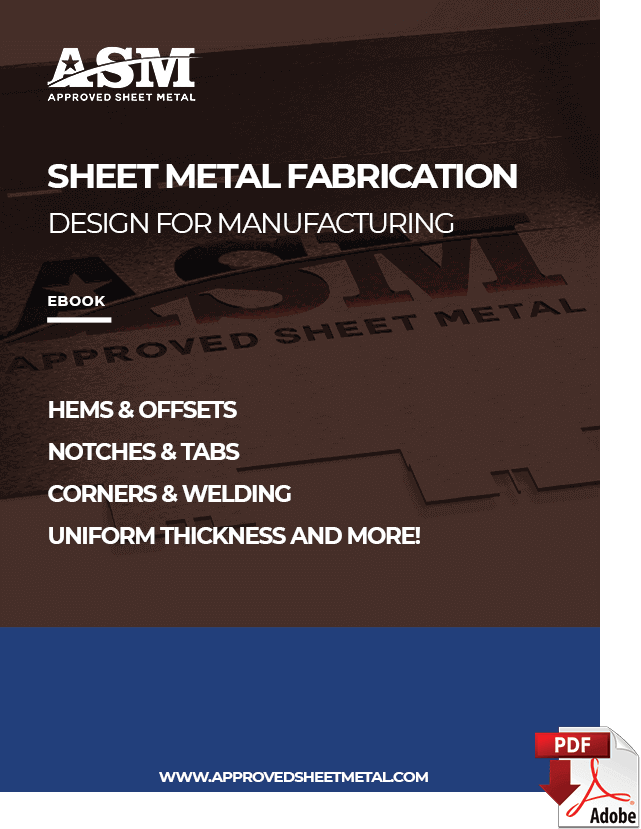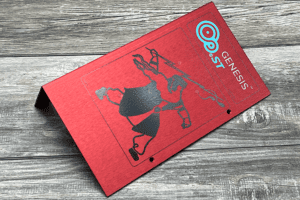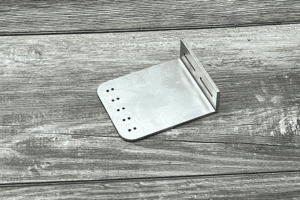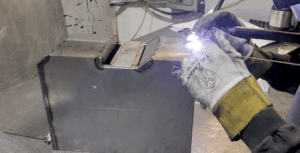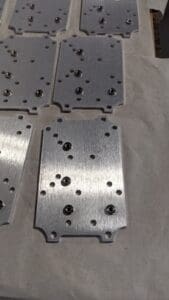Last updated on October 27th, 2025 at 09:21 am
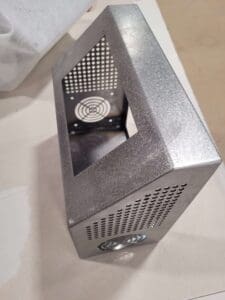 Does the mere mention of prototype sheet metal fabrication make you break out in a cold sweat? It doesn't have to.
Does the mere mention of prototype sheet metal fabrication make you break out in a cold sweat? It doesn't have to.
Sure, prototyping can come with anxiety-inducing costs, especially at quantity 1, when all the setup and run-time costs are rolled into the fabrication of a single part. But with the right prototyping partner and a commitment to collaboration, you can stretch your budget without compromising on quality.
At Approved Sheet Metal, we've been in the prototype fabrication trenches long enough to know that you can achieve the form, fit, and function you need without breaking the bank.
Table of Contents
- 1 First, Let’s Debunk These Two Prototyping Myths
- 2 5 Tips for Building a Budget-Friendly Prototype
- 2.1 1. Take the “sheet metal first” approach
- 2.2 2. Partner with prototype fabrication specialists
- 2.3 3. Choose standard materials and finishes
- 2.4 4. Opt for a prototyping partner, not a temporary transaction
- 2.5 5. Plan beyond the prototype
- 2.6 *BONUS* Stay Organized with Iterative Prototyping and Version Control
- 2.7 Use Revision Naming Conventions
- 2.8 Document What Changed
- 2.9 Provide Pack & Go Files or Flat Patterns
- 2.10 Ask for Batch Comparison Quotes
- 3 Let ASM’s Prototyping Prowess Empower Your Startup
- 4 Sheet Metal Design for Manufacturing
- 5 Prototype Sheet Metal Fabrication Tips for Startups FAQ
- 5.0.1 Why do prototypes often come with high costs, especially at small quantities?
- 5.0.2 How does the misconception of "expensive prototypes are better prototypes" affect the fabrication process?
- 5.0.3 What role do design features, materials, and finishes play in keeping prototyping costs low?
- 5.0.4 How can a partnership with a specialized prototype fabrication shop benefit startups?
- 5.0.5 What considerations should startups keep in mind beyond the prototype phase?
First, Let’s Debunk These Two Prototyping Myths
There are two major misconceptions associated with sheet metal prototype services, and we’ll tell you exactly why they’re untrue.
Myth #1: “Expensive prototypes are better prototypes.”
These are the facts: Folks frequently equate high cost with high quality, but an experienced shop like ASM has the nuanced knowledge and agility to help you mitigate costs while still delivering a prototype with impressive form, fit, and function—even at quantity 1! In fact, ASM provides price breaks at quantity 1 and includes options for quantities 3 and 5.
Myth #2: “Any design and material will do!”
Here’s the deal: When it comes to prototype fabrication, “off-the-shelf” options are often your best bet. Unnecessary design features, exotic materials, and specialty finishes can all cause costs and lead times to skyrocket. Consult your fabricator to determine which tooling, materials, and finishes are readily available. They may not match the options you’ll choose for the final production, but they’ll be perfect for the prototyping phase.
5 Tips for Building a Budget-Friendly Prototype
Now, let’s review the steps you can take to ensure your wallet withstands the prototyping phase. Each of these decisions contributes not only to keeping prototyping costs low but also to obtaining the highest quality prototype possible within your set budget and timeline.
1. Take the “sheet metal first” approach
Given sheet metal’s unique challenges, startups should focus on their product’s sheet metal design first. Here’s an example that demonstrates why the “sheet metal first” approach is so important:
Many years ago, a customer ordered sheet metal parts with bend tolerances that weren’t possible to achieve. A simple design modification would have fixed the problem. However, the sheet metal parts were destined for an assembly, and the assembly’s machined parts had already been completed.
In other words, the sheet metal design could not be altered. The only remaining solution was for ASM to perform extensive post-machining work, which increased the customer’s cost and lead time.
In short, to avoid a budget-draining situation, prioritize your sheet metal components before developing any mating parts.
2. Partner with prototype fabrication specialists
Recently, many shops have begun offering prototyping services. But a great deal of these shops will almost certainly cease prototyping work once their production levels return to normal.
ASM is different. We specialize in prototype sheet metal fabrication, with tools, talent, and expertise accrued from decades in the industry, and we understand the unique challenges prototyping presents. Not only are we equipped to guide you, but we’re also truly passionate about prototyping.
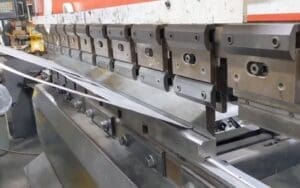
We can’t say it enough: forge a long-term partnership with a shop like ASM—one that specializes in sheet metal prototype services and enjoys the work—and you’ll always have a partner on hand to assist with any and every prototyping challenge.
3. Choose standard materials and finishes
Your final product can be made of whatever cutting-edge, wildly rare, space-age miracle material you desire. But for the prototyping phase, stick to standard, readily available materials and finishes.
As your prototype sheet metal fabricator, ASM can help you identify the best options for your prototype’s purpose—just ask! By prototyping with lower-cost alternatives to your final selections, you can get your prototype faster and at a much lower price.
4. Opt for a prototyping partner, not a temporary transaction
Startups that purchase sheet metal prototype sheet metal fabrication services from a cheap, online marketplace deal with disappointing quality and lackluster service. Here at ASM, we’re invested in more than your one-off prototype order; we’re here to help your startup succeed for the long haul with a prototyping partnership that advances you toward your immediate and more ambitious goals.
You’ll benefit from our shop’s ongoing collaboration, focused understanding of your project, and favorable pricing. The ASM team finds genuine joy in supporting startups—market fluctuations be damned.
5. Plan beyond the prototype
What is the purpose of your prototype? Whether you're trying to validate a concept or create a high-quality model of a future product, a comprehensive awareness of your objective will influence your design, material, and fabrication choices, all of which impact your prototype’s cost.
If you’re struggling to visualize the big picture and prioritize your next steps, talk to our team. We’ll help you make those key decisions so you can steer your project effectively and efficiently.
prototyping challenges, and we’re fully equipped to help you obtain the prototype fabrication services you truly need.
*BONUS* Stay Organized with Iterative Prototyping and Version Control
In the world of mechanical design, prototyping is rarely a one-and-done process. Most startups go through multiple rounds of refinement—adjusting cutouts, changing hardware, tightening tolerances, or even redesigning entire assemblies based on test results and stakeholder feedback. That’s why keeping track of prototype revisions is critical.
At ASM, we work closely with engineers and startups to support fast iteration cycles. Here’s how you can keep your prototypes organized and your progress on track:
Use Revision Naming Conventions
Always name and document your prototype revisions clearly. “Rev A,” “Rev B,” or date-stamped versions (e.g., Chassis_v2024-06-01) help prevent miscommunication and ensure our shop is working from the most up-to-date design.
Document What Changed
Whether it’s a minor slot adjustment or a complete enclosure redesign, include a summary of changes in your RFQ or email. This helps our team understand your intent and identify any downstream effects—such as hardware changes or altered bend geometry.
Provide Pack & Go Files or Flat Patterns
To eliminate confusion, submit a clean CAD package using SolidWorks’ Pack & Go or include DXFs of flat patterns with clear bend notes. Even small mismatches between 3D models and 2D drawings can result in production delays.
Ask for Batch Comparison Quotes
If you’re deciding between two designs, let us know—we’re happy to quote both and help you evaluate the cost and lead time differences. Iteration doesn’t have to be inefficient when you have a proactive partner.
By treating version control as part of your prototyping strategy, you’ll reduce rework, stay aligned with your fabrication team, and keep your development timeline on track.
Let ASM’s Prototyping Prowess Empower Your Startup
Prototyping doesn't have to be a daunting, expensive process. Our experienced and engaged team thrives on solving even the most complex
Start your prototyping partnership with ASM. Get in touch.

